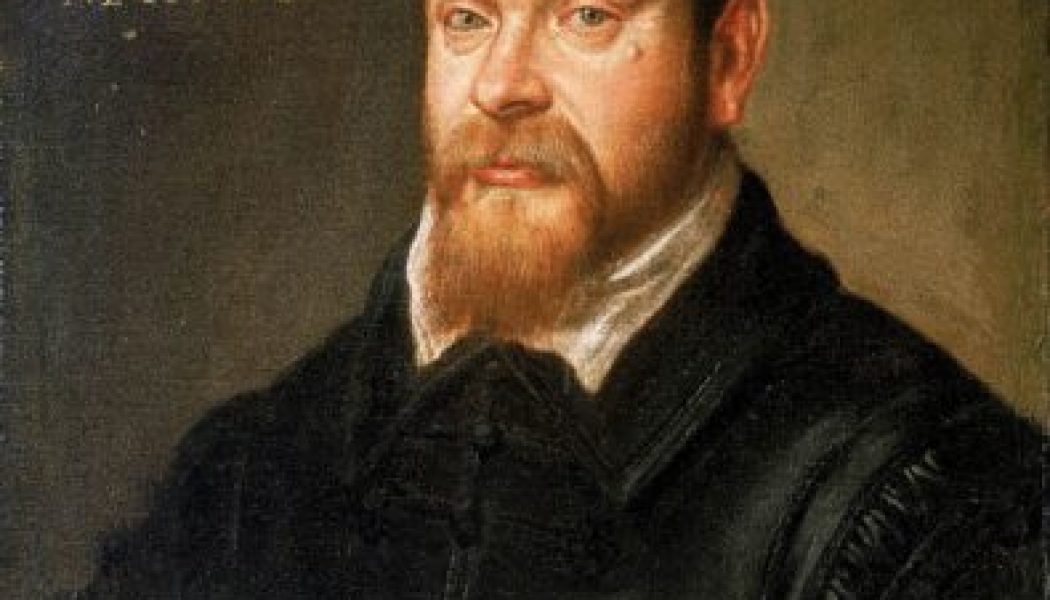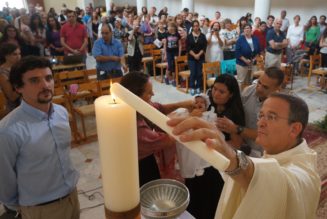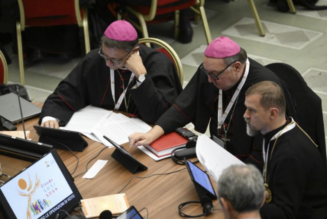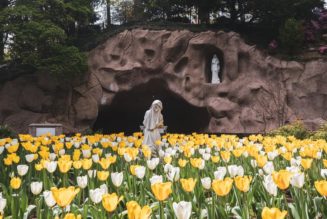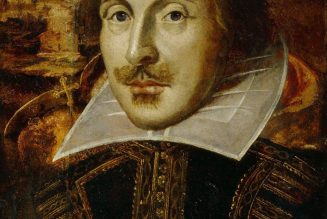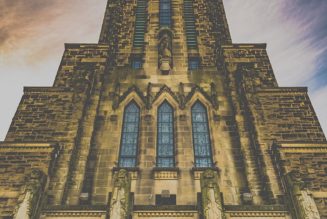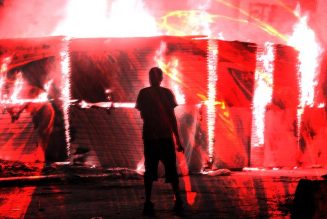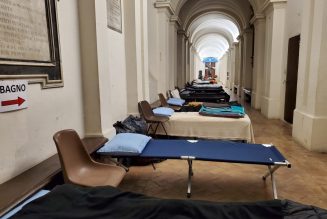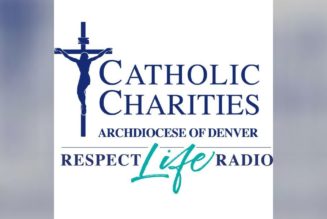Four hundred years after the trial, the mere mention of the name “Galileo” is often considered a powerful one-word refutation against the Catholic Church. Why? Because, according to the popular telling of the “Galileo Affair,” it was Galileo who: 1) proved heliocentrism, despite a Church that officially declared heliocentrism to be a heresy; 2) was tortured and martyred by the Church, and; 3) discovered that Scripture—and by extension, the Catholic Church—was a fraud.
But is that what actually happened? It’s important to revisit the Galileo case here, not only because it affects the way some view the Catholic Church, but also because it affects the way we view faith and science going forward.
Galileo and the Catholic Church: historical and philosophical background
For some Catholics, Galileo is an egomaniacal astronomer who attacked Scripture and the Catholic Church every step of the way. At the other end of the spectrum, there are those who troll for opportunities to condemn both Christians and Christianity, and for them, the Galileo case is simply another example of the Catholic Church denying science and strong-arming the helpless. But the truth is, the Galileo Affair is anything but a simple affair.

Portrait of Galileo Galilei by Domenico Tintoretto / Public domain
In fact, in order to evaluate the Galileo case thoroughly—as a reading of books like “Galileo, Science and the Church” by Jerome Langford illustrates—it helps to have a working knowledge of astronomy, Aristotelian philosophy, Scriptural exegesis, patristic theology, canon law, and the ecclesiastical structure of the Catholic Church. It’s also important to understand something else: in some ways, the Galileo controversy began long before Galileo.
We might say that the Galileo controversy began around 350 BC in Greece; for it was then that the Greek philosopher Aristotle posited a convincing rationale for a stationary, spherical, and central earth that heavenly bodies, including the sun, traveled around. That geocentric theory would prevail for almost two millennia, primarily because it was not inconsistent with the available physics and observational data during these years.
But there is another reason that Aristotle’s theory became so ingrained. Aristotle was revered because he had advanced so many fields of human knowledge including physics, metaphysics, ethics, politics, and economics. To all this, add the fact that Aristotle was largely embraced by the medieval Catholic world, because some of his arguments and positions helped provide a reasonable framework to explain the truths of the Catholic Faith (a fact illustrated in Saint Thomas Aquinas’ “Summa Theologica,” which references Aristotle throughout).
Aristotle’s overall brilliance cannot be denied, but this created a temptation to think that Aristotle was never wrong. At minimum, in many intellectual circles of Europe, one did not disagree with Aristotle lightly.
Of course, Aristotle’s geocentric view had something else going for it: it supported a literal interpretation of those verses of Scripture that seemed to make geocentric observations, such as Joshua 10:13:
“So the sun stood still, and the moon stopped…” –Joshua 10:13
Copernicus: author of the intellectual centerpiece of heliocentrism

Nicolas Copernicus / Polish: Unknown painter (school of Cranach) derivative work: Craigboy – Public domain
Fast forward 1,850 years or so, and along came a man named Copernicus (1473-1543) who was not only Catholic, but served the Church for much of his life as a cleric and canon lawyer. Copernicus was quite similar to Aristotle in some respects, insofar as his interests and expertise spread across a wide swath of subjects including mathematics, theology, and economics.
But it was his insight into astronomy for which history remembers him. While the vast majority still believed that the earth was the motionless center of the universe, Nicolaus Copernicus had posited the theory of heliocentrism in a book called “On the Revolutions of the Celestial Spheres,” which was printed around the time of his death. In the history of heliocentric thought, this book was the breakthrough—you might say it is the intellectual centerpiece of heliocentrism.
The fact that the book was not published until Copernicus’ dying days has created intrigue for those who wish to present the Church as institutionally hellbent on attacking heliocentrism. After all, what other reason could there be to delay publication other than Copernicus’ well-founded fear of a powerful Church that was hostile toward those who espoused heliocentrism?
Cardinal Schonberg’s letter to Copernicus
But was that the attitude of high-ranking prelates? For an answer to that question, we can turn to Cardinal Nicholas Schönberg, Cardinal of Capua, who in 1536, penned this letter to Copernicus:
“Some years ago word reached me concerning your proficiency, of which everybody constantly spoke… For I had learned that you had not merely mastered the discoveries of the ancient astronomers uncommonly well but had also formulated a new cosmology. In it you maintain that the earth moves; that the sun occupies the lowest, and thus the central, place in the universe… I have also learned that you have written an exposition of this whole system of astronomy, and have computed the planetary motions and set them down in tables, to the greatest admiration of all. Therefore with the utmost earnestness I entreat you, most learned sir, unless I inconvenience you, to communicate this discovery of yours to scholars, and at the earliest possible moment to send me your writings on the sphere of the universe together with the tables and whatever else you have that is relevant to this subject. Moreover, I have instructed Theodoric of Reden to have everything copied in your quarters at my expense and dispatched to me.” (Emphasis added.)
For someone who maintains the modern Galileo narrative—that the Church regarded heliocentrism as a heresy and was eager to persecute heliocentrists—the above quote is tough to explain.
Cardinal Schonberg’s letter was penned seven years prior to the publication of the Copernicus’ book, meaning that Copernicus’ reputation for adhering to heliocentrism was well-known in Christendom. Yet, bishops and cardinals were not only eager for him to publish his findings, but willing to finance the endeavor! In fact, Copernicus writes that he would have never written the book except for the encouragement of Catholic prelates like Cardinal Schönberg and Bishop Giese of Chelmno. It is little wonder that Copernicus dedicated the book “To His Holiness, Pope Paul II.”
Copernicus’ hesitancy to against the traditional opinion
If not concerned for the negative response of Church officials, why the reticence on the part of Copernicus? Langford argues, rather, that Copernicus was in no hurry to go against the well-worn groove of geocentrism that had been formed since Aristotle. Copernicus realized, in his own words, that he was going “against the traditional opinion of astronomers and almost against common sense.” Yet, he did write his heliocentric masterpiece—with the encouragement of bishops, cardinals, and popes.
Sadly, Copernicus did not live to see the reception of his magnum opus—as he died shortly after its publication. It is unlikely that Copernicus foresaw the influence that his book would soon have—nor how soon that influence would occur. Because twenty-one years later, there would be a child born in Pisa who would try to see farther than Copernicus ever had.
Then the intrigue would really begin.
Galileo’s message
Galileo Galilei was born on February 15, 1564—just three days prior to the death of Michelangelo. While Michelangelo had painted the Heavens, Galileo sought to explore them; ironically, both men would have fiery altercations with the papal offices in their pursuits.
Galileo’s genius and stardom
Showing genius across a wide spectrum of subjects, but especially in physics and mathematics, Galileo developed a fascination with astronomy that quickly grew to breathtaking exhilaration with the invention of the telescope in 1608.
Though he did not invent the telescope, Galileo quickly improved the device from a mere plaything to a powerful scientific instrument. With this newfound instrument of discovery, he took a look around the universe. In 1610, Galileo reported his findings and discoveries (including four moons of Jupiter) in a little book called “Starry Messenger.”
With the book’s publication and distribution, Galileo achieved stardom and became a sought-after guest of Italy’s cardinals and dignitaries. Galileo won the admiration of Cardinal Robert Bellarmine and became good friends with Cardinal Maffeo Barberini (the future Pope Urban VIII). In the time that followed, however, Galileo’s relationship with some prelates became strained due to his insistent promotion of heliocentrism as factual.
In a 1615 letter, Cardinal Bellarmine advised Galileo to refrain from presenting his theory as fact, largely because it seemed to contradict Scripture and the view of the Fathers of the Church on the issue. (As several writers have demonstrated, Bellarmine’s inference that all the Fathers of the Church agreed on this issue was demonstrably incorrect.) Bellarmine’s concern was that Galileo’s theories seemed to contradict Scripture, and this could cause serious doubts in the minds of the faithful. In 1616, Galileo was formally advised by Bellarmine not to hold his heliocentric theory unless and until he could prove it.
Though he first seemed to accept this counsel, Galileo had other ideas.
Galileo is called to Rome
In his book, “Galileo: The Man, His Work, His Misfortunes,” Galileo biographer James Brodrick writes,
“Galileo plainly did not suffer from excessive modesty, but geniuses rarely do, and he was a superlative genius.”
In Brodrick’s estimation, it went deeper than that. For Galileo, it was not enough to be right; Galileo relished making his opponents look stupid. That character flaw did not serve him well.
Galileo’s 1632 book, “Dialogue Concerning the Two Chief World Systems,” was written in the form of a fictional dialogue in which the characters discuss, among other scientific things, Copernican heliocentrism. Not only did the book present heliocentrism as more fact than theory (albeit in a fictional dialogue), it mocked his opponents; even his old friend Maffeo Barberini (now Pope Urban VIII) felt personally slighted. Galileo also used some trickery to obtain an imprimatur (a prelate’s declaration that a book is free from theological error) for the book, which amounted to a unique combination of hubris and contempt. Brodrick writes,
“Not even the most ardent admirer of Galileo, and I count myself such, can deny that he resorted to very shifty practices to obtain an imprimatur for his ‘Dialogue.’”
Somewhat predictably, Galileo was called to Rome to face a trial that began in 1633.
Galileo (and heliocentrism?) on trial
Before we examine the actual trial, two important points need to be addressed: the first, historical; the second, theological.
First, Galileo’s case lasted only a short time. Because Galileo received Bellarmine’s warning in 1616 and appeared before the Inquisition court in 1633, it is often surmised that Galileo’s trial dragged on for nearly two decades. But these were completely separate events—occurrences in 1616 and 1633, rather than 1616 through 1633. The event in 1616 was a brief occurrence on one single day. Furthermore, even if one considered the 1633 official trial as lasting from his first interrogation on April 12 to his sentencing on June 22 (during which Galileo resided at apartments of the Holy Office in Rome), the combined duration of these events was two-and-a-half months.
Second, ecclesiastical courts can err and err terribly. The findings of an ecclesiastical court are not protected by infallibility—and no official statement has ever claimed otherwise. The ruling of an ecclesiastical court is not dogmatic, nor is it necessarily even correct, nor do the jurors necessarily agree. (In Galileo’s trial, some of the cardinals voted for acquittal.)
In the many hundreds of years of ecclesiastical court cases and hearings, we can guess that—as with other courts, sadly—numerous guilty people have gone free and numerous innocent people have been found guilty. (The case of Joan of Arc readily comes to mind.) Miscarriages of justice are always tragic, but exactly zero of this has anything to do with dogma or the infallible protection of the Holy Spirit. Theoretically, Galileo could have been unjustly convicted and sentenced for the heresy of jaywalking. That’s important to keep in mind.
The Trial of 1633
In the actual trial of 1633, Galileo repeatedly denied a current belief in heliocentrism (which was confusing to his accusers, to say the least, since he had just written a book defending the position and mocking those who disagreed). Not surprisingly, he was convicted of being “vehemently suspected of heresy.”
In his closing statement, Galileo swore to “abandon the false opinion that the sun is the center of the world and immobile, and that the earth is not the center of the world and moves,” and promised to write no more about it. Nevertheless, Galileo was sentenced to house arrest.
Herein—the charge of heresy, the conviction, and the sentence—provides the fodder for many of those who criticize the Catholic Church in the Galileo case. The charge of heresy was utterly unfounded: the Catholic Church never defined heliocentrism as a heresy. Galileo could have been accused of acting rashly, of treating others with contempt, or of “speaking absolutely” about something as fact that he couldn’t prove.
As we discussed above, many high-ranking church officials were very pleased with Copernicus’ heliocentric theory—not to mention the fact many had been captivated with Galileo’s theories. So the ecclesiastical court never should have treated Galileo as a heretic. (Some Catholic apologists try to defend the actions of the ecclesiastical court by pointing out that Galileo was never tortured. And it’s true: Galileo was never tortured. Yet, that’s hardly a defense: the use of torture is not the litmus test of whether or not injustice has occurred.)
To convict Galileo on this charge was an injustice, and, moreover, employed terribly poor theology.
On this point, some of Galileo’s accusers claimed that Galileo was questioning or denying Scripture. Was he? Galileo’s position, illustrated in his 1615 “Letter to the Grand Duchess Christina of Tuscany,” was that Scripture often uses language that is poetic and non-literal, so it could be that the scriptural verses that seemed to promote geocentrism fell into that category as well.
Centuries later, Pope John Paul sides with Galileo
In a 1992 address to the Pontifical Academy of Sciences, Pope Saint John Paul II sided with Galileo, saying “Paradoxically, Galileo, a sincere believer, showed himself to be more perceptive in this regard than the theologians who opposed him.”
John Paul went on to quote Saint Augustine, who wrote:
“If it happens that the authority of Sacred Scripture is set in opposition to clear and certain reasoning this must mean that the person who interprets Scripture does not understand it correctly. It is not the meaning of Scripture which is opposed to the truth, but the meaning which he has wanted to give to it. That which is opposed to Scripture is not what is in Scripture but what he has placed there himself, believing that this is what Scripture meant.” -St. Augustine
Sadly, for Galileo, Saint Augustine’s (and centuries later, John Paul’s) viewpoint here was ignored at his trial.
Theology and heliocentrism
At the same time, one wonders how much theology even mattered at Galileo’s trial. By 1633, Galileo had torqued off the pope, the Jesuit order, a fair number of cardinals, and a handful of mathematicians and astronomers. It was most certainly Galileo who was on trial.
In Bellarmine’s aforementioned letter of 1615, he did not forbid Galileo—or anyone else, for that matter—from holding heliocentric positions theoretically. Bellarmine even wrote that Galileo “would act prudently” if he spoke “hypothetically and not absolutely” about his heliocentric theory. But isn’t that the same thing as condemning heliocentrism? Not even close.
To illustrate the point, let’s use a different example. Imagine that Galileo had traveled to Rome—not to argue against geocentrism—but to argue against the Virgin Birth. Would Cardinal Bellarmine write that Galileo “would act prudently” if he spoke only “hypothetically and not absolutely” against the Virgin Birth? Of course not. The Church had made dogmatic pronouncements on the Virgin Birth, but the Church has never made a formal, dogmatic pronouncement on heliocentrism.
Back to Bellarmine
Modern writers view Bellarmine as an anti-scientific bogeyman—as the biological manifestation of an “anti-science” Church. That’s a little unfair, given the fact that Bellarmine died in 1621, a full twelve years prior to Galileo’s trial and sentence.
Was Bellarmine anti-science? To review, here was Bellarmine’s position: If you want to proclaim something as fact, prove it. Unless and until you can, do not present it as fact. This standard is no different from what is required of scientists of our time.
The next logical question is: How close was Galileo to actually proving a heliocentric solar system?
Not as close as some might think.
Proof of the heliocentric theory?
In a January 2014 Scientific American article titled, “The Case Against Copernicus,” Dennis Danielson and Christopher M. Graney illustrate that although some believe that Galileo’s observations cracked the case for heliocentrism, there were still serious holes in his theory.
Among the issues was the problem of stellar parallax, which is a trigonometrical method used to determine the distance between stars. At Galileo’s time, observational data involving stellar parallax served as an argument against heliocentrism. There was also the need to discover a new system of physics which included gravitational pull. These aren’t minor points.
It is often suggested that only moronic churchmen failed to fully accept Galileo’s writings as confirmed facts. But the inconvenient truth for them is that many scientists had a bigger problem with Galileo’s heliocentrism than some cardinals and popes did. As Danielson and Graney write, “For a long time after 1609, astronomers still had compelling scientific reasons to doubt Copernicus.” Galileo had certainly discovered a clue, but the case wasn’t cracked until many years later. Danielson and Graney continue,
“Nobody convincingly recorded the annual stellar parallax until Friedrich Bessel did it in 1838. Around that same time, George Airy produced the first full theoretical explanation for why stars appear to be wider than they are, and Ferdinand Reich first successfully detected the deflection of falling bodies induced by Earth’s rotation. Also, of course, Isaac Newton’s physics—which did not work with Brahe’s system—had long since provided an explanation of how Brahe’s “hulking, lazy” Earth could move.” –Dennis Danielson and Christopher M. Graney, “The Case Against Copernicus”
Brother Guy Consolmagno, the Director of the Vatican Observatory, makes a similar observation:
“And, indeed, as we know, Galileo did not propose a new model of the universe; that honor, of course, goes to Copernicus. Nor did he improve it, as Kepler did. Nor did he put it on a deeper physical basis, the way Newton did. Nor did his observations even demonstrate that it was true, in a mathematical sense, since certainly the Tycho Brahe model fit Galileo’s data as well as the Copernican model did. Nonetheless, Galileo’s observations and publications were crucial, indeed a pivotal event, in all of these developments.”
Through no fault of his own—after all, we cannot blame Galileo for failing to make even more brilliant discoveries—Galileo was unable to prove heliocentrism. It was a colossal error that he failed to admit that.
The aftermath: Galileo’s last days
During his sentence of house arrest, Galileo spent time with friends and family in various cities: Siena, Arcetri, and Florence. Galileo’s trial had taken place when he was about seventy years old and his health was poor even for a man his age. But the worst blow to his overall health came when his daughter, the cloistered sister Suor Maria Celeste, died in 1634 at the young age of 33. Upon her death, Galileo wrote,
“An immense sadness and melancholy, complete loss of appetite and disgust with my existence, makes me feel that I am being continually called by my dearest daughter.”

Galileo Galilei Peter Paul Rubens c. 1630 / CC BY-SA
His daughter had been very close to Galileo over the years, and constituted almost a living guardian angel for her father—frequently writing notes of encouragement to him when he seemed to need them most. In fact, over one hundred of her beautiful letters survive. These letters witness a love between a father and daughter, but they also witness something else: Galileo was a man who cared about and believed the Catholic Faith.
This is a point often missed or simply ignored, but it is an important one.
Why? Because implicit in the modern take away from the “Galileo Affair” is that Galileo’s discoveries exposed Scripture as a fraud, thereby disproving Christianity. But Galileo himself did not see it this way.
Galileo’s biographers, including James Brodrick and Stillman Drake, note that Galileo practiced his Catholic Faith uninterrupted in his imprisonment and house arrest and died in 1642 with the sacraments. Why would Galileo continue to practice a Faith that he had “disproven?” Ironically, Galileo continued to practice his Catholic Faith even under duress caused by Catholics. Galileo was able to do something that modern critics seem either unwilling or unable to do: separate the actions of rogue church officials from The Roman Catholic Church.
Conclusion
In the four centuries following his death, Galileo and the Church have had their defenders, but as we have seen if one wishes to serve truth, there’s more to examine than meets the eye. As Pope Saint John Paul II observed, Galileo proved to be a better theologian in some respects than those who found him guilty.
Ironically, many critics of the Church in this matter—who believe they are siding with Galileo—often make the same mistake that some of his court accusers largely made.
And that mistake is this: that Scripture must be read literally, and any deviation from the literal meaning must be wrong. The theory goes: if the literal words of Scripture can be disproven, Scripture must be false. Theologically, Galileo’s entire defense countered this view. Seemingly echoing the pre-eminent church father, Saint Augustine, Galileo wrote:
“Surely if the intention of the sacred scribes had been to teach people astronomy, they would not have passed over the subject so completely.” -Galileo
A fact we would all do well to remember.
Cover Image: “Galileo before the Holy Office” by Joseph-Nicolas Robert-Fleury / Public domain
Read Also:
The Copernican Revolution – Differently
Astronomy, God, and the Search for Elegance
23 Famous Scientists Who Are Not Atheists
John Clark is an author, speechwriter, and a weekly blogger for the National Catholic Register. He has written hundreds of articles and blogs about Catholic family life and apologetics in such places as Seton Magazine, Catholic Digest, and Homiletic and Pastoral Review. A graduate of Christendom College, John and his wife Lisa have nine children and live in Virginia.
